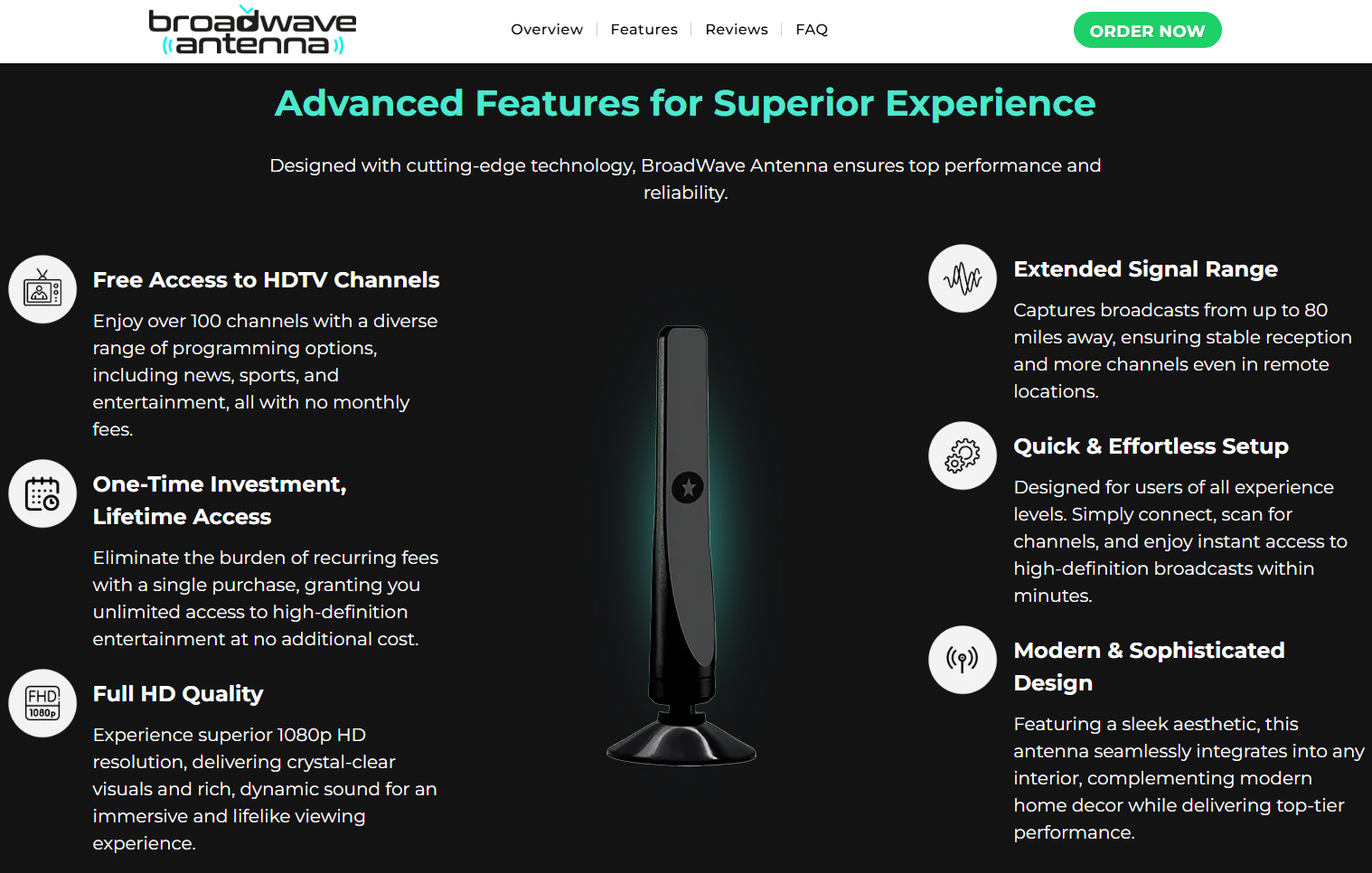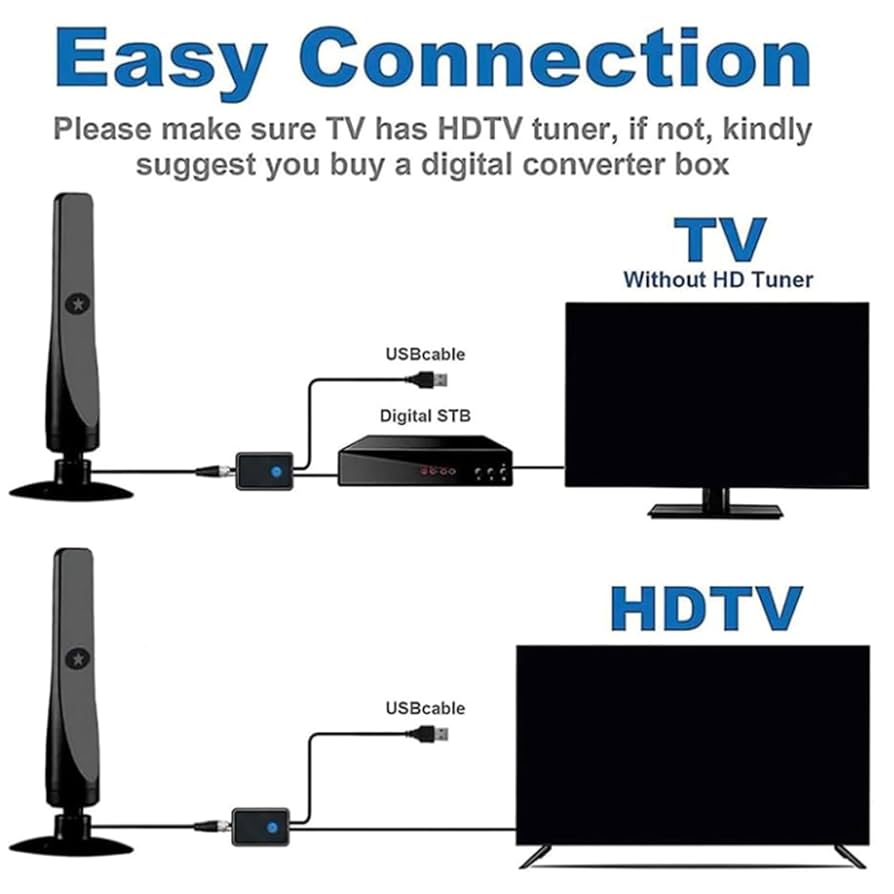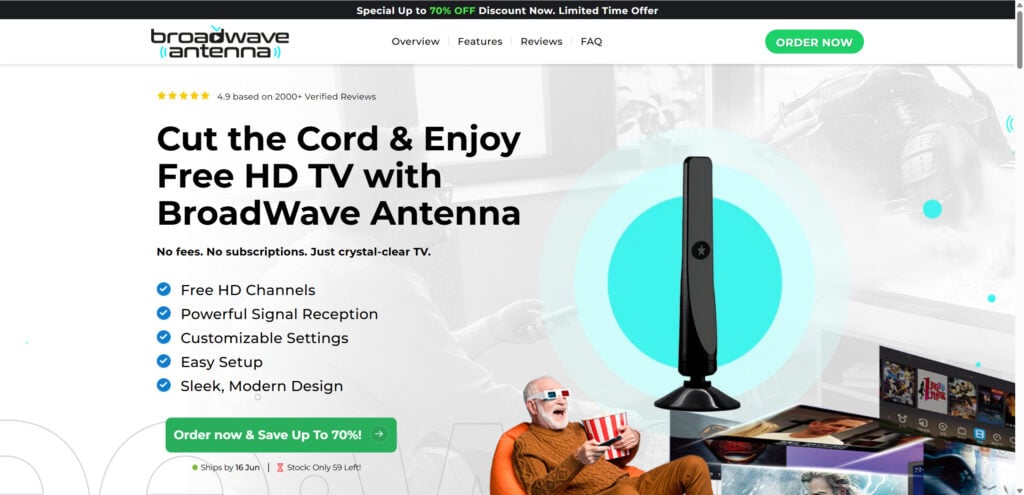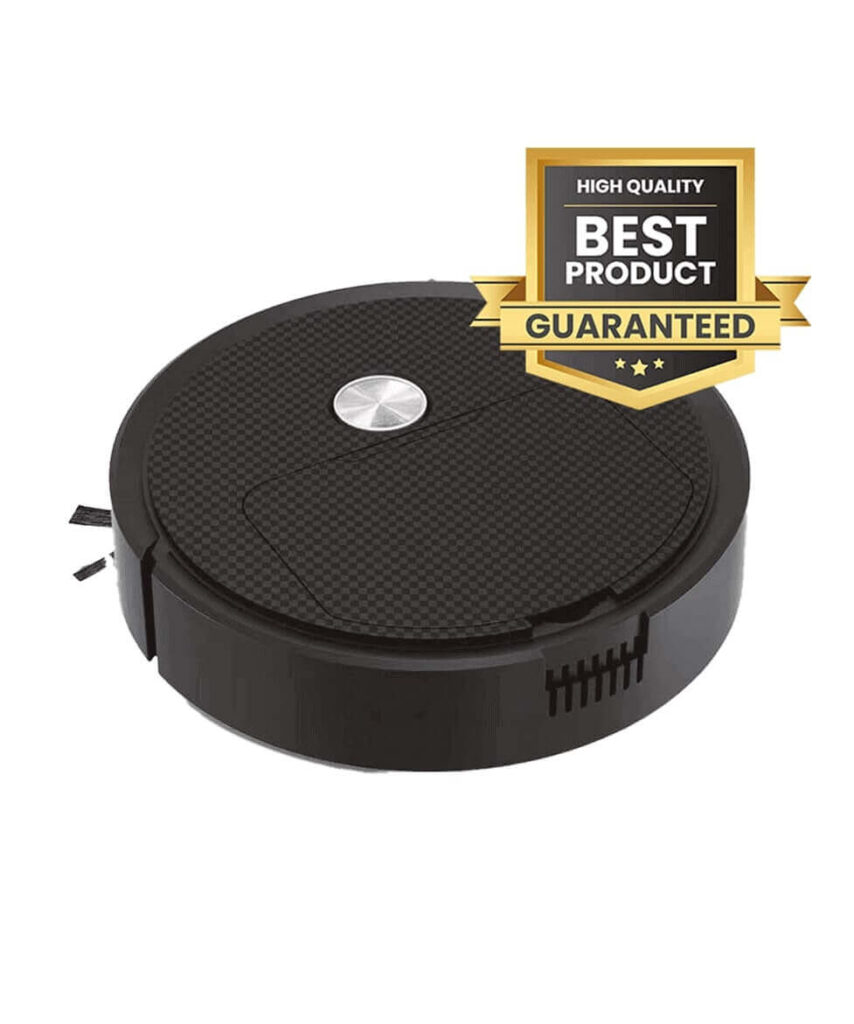BroadWave Antenna Reviews:
In a world where seamless communication is essential—from military operations to emergency services, remote broadcasting, and scientific exploration—the demand for high-performance antennas has never been greater. Enter BroadWave Antenna, a powerful solution designed for broadband frequency applications. Whether you’re an RF engineer, amateur radio enthusiast, military contractor, or industrial operator, BroadWave antennas promise exceptional performance, reliability, and efficiency.
What is a BroadWave Antenna?
A BroadWave Antenna is a type of broadband antenna engineered to operate across a wide range of frequencies with minimal signal loss. These antennas are designed to support applications that demand consistent performance across various RF bands—ranging from kilohertz (kHz) to gigahertz (GHz).
BroadWave antennas are used in a wide variety of fields including:
- Telecommunications
- Military and defense
- Radio astronomy
- Research and testing labs
- Public safety communication
- EMC/EMI testing environments
The hallmark of BroadWave Antennas is their broadband frequency response, low Voltage Standing Wave Ratio (VSWR), and rugged construction.
Don’t Miss Out: Special Offer on “BroadWave Antenna” – Free Shipping Included!
Key Features of BroadWave Antennas
BroadWave antennas stand out due to a set of defining features that make them ideal for professional and industrial applications:
✅ Wide Frequency Range
Typical frequency support spans from 20 MHz up to 20 GHz or more. This allows a single antenna to handle multiple applications or systems without needing to swap components.
✅ Low VSWR
A low VSWR (<1.5:1 across wide bandwidths) ensures efficient signal transmission and minimal reflection. This is essential for high-fidelity communications and measurements.
✅ Omnidirectional or Directional Designs
Depending on the application, BroadWave antennas are available in both omnidirectional (360-degree coverage) and directional (focused beam) models.
✅ High Power Handling
Many BroadWave Antennas can handle hundreds of watts of power, making them suitable for transmit and receive functions in demanding environments.
✅ Compact and Rugged Construction
Built using weatherproof materials and precision engineering, BroadWave antennas can operate in harsh environments—indoors and outdoors.
✅ Connector Versatility
BroadWave antennas are available with a variety of connectors including N-type, SMA, BNC, TNC, and 7/16 DIN, offering flexibility for integration.
Don’t Miss Out: Special Offer on “BroadWave Antenna” – Free Shipping Included!

Common Types of BroadWave Antennas
There isn’t just one BroadWave antenna. Depending on the application, several designs fall under the BroadWave category:
🔹 Log Periodic Dipole Array (LPDA)
- Ideal for wideband frequency coverage
- Directional radiation pattern
- Common in EMC testing and surveillance
🔹 Biconical Antennas
- Excellent for low-frequency testing (e.g., 20 MHz to 300 MHz)
- Omnidirectional in the horizontal plane
- Used in EMI/EMC applications
🔹 Discone Antennas
- Very wide frequency range (VHF to UHF)
- Omnidirectional pattern
- Popular among ham radio operators and spectrum analyzers
🔹 Horn Antennas
- High-frequency applications (GHz range)
- Highly directional
- Used in radar, microwave, and satellite systems
🔹 Spiral Antennas
- Circular polarization
- Used in direction finding and military applications
Don’t Miss Out: Special Offer on “BroadWave Antenna” – Free Shipping Included!
Applications of BroadWave Antennas
BroadWave antennas are trusted across a wide array of industries. Their broad frequency compatibility and high performance make them ideal for:
🎯 Military and Defense
Used in radar systems, signal jamming, surveillance, and battlefield communications due to their robustness and adaptability to different frequency bands.
🎯 EMC/EMI Testing
BroadWave antennas help ensure devices meet international electromagnetic compliance standards. LPDAs and biconical antennas are standard here.
🎯 Telecommunications
Used in cellular towers, Wi-Fi testing, and 5G deployment, especially when testing multiple bands or technologies on a single antenna.
🎯 Broadcasting and Media
Ideal for radio and TV signal transmission and monitoring across VHF/UHF bands.
🎯 Scientific Research
Used in radio astronomy, geophysical exploration, and space research where accurate wideband measurements are needed.
🎯 Public Safety Networks
Essential for emergency responders who require uninterrupted communication over different frequencies.
BroadWave Antenna Technology Explained
At the core of BroadWave antennas is their broadband matching network and precision-engineered radiating elements, designed to maintain low return loss across a wide bandwidth. Here’s how it works:
- Wideband Impedance Matching: Ensures consistent 50-ohm load across frequency ranges.
- Efficient Radiation Patterns: Maintains gain and beam shape as frequency varies.
- Shielding and Filtering: Prevents interference from adjacent bands or high-power transmitters.
The engineering involves trade-offs in gain, beamwidth, and physical size to maintain wideband operation.
Don’t Miss Out: Special Offer on “BroadWave Antenna” – Free Shipping Included!

BroadWave vs. Narrowband Antennas
| Feature | BroadWave Antenna | Narrowband Antenna |
| Frequency Range | Wide (MHz to GHz) | Narrow (few MHz) |
| Applications | Versatile | Application-specific |
| Cost | Higher | Lower |
| Setup | Plug-and-play | Requires tuning |
| Flexibility | Multi-band | Single-band |
Pros and Cons of BroadWave Antennas
✅ Advantages
- Single antenna supports multiple frequencies
- Ideal for dynamic environments
- Simplifies hardware setups
- Future-proof for evolving technologies
❌ Disadvantages
- Larger physical size (in some cases)
- Higher initial cost
- May require external filters in high-noise environments
Installation & Setup Guide
📦 What’s in the Box?
- BroadWave Antenna Unit
- Mounting Brackets or Tripod
- Coaxial Cable with Appropriate Connector
- User Manual
- Calibration Certificate (optional for test models)
🛠️ Step-by-Step Installation
- Location Selection: Choose an open area with minimal obstructions for optimal radiation pattern.
- Mounting: Use tripod, mast, or roof mount. Ensure it’s grounded properly.
- Cable Connection: Connect coaxial cable from antenna to receiver/transmitter.
- Calibration (If Needed): For test and measurement use, follow manufacturer instructions.
- Power Up: Apply transmission power or start data capture based on your system.
Don’t Miss Out: Special Offer on “BroadWave Antenna” – Free Shipping Included!
Buying Guide: How to Choose the Right BroadWave Antenna
When selecting a BroadWave antenna, consider the following:
📌 Frequency Range
Make sure the antenna supports all intended frequencies. Check datasheets for verified bandwidth.
📌 Gain
High gain is important for directional applications, while omnidirectional use cases may benefit from lower gain for wide coverage.
📌 Connector Type
Match with your existing test equipment or RF system to avoid needing adapters.
📌 Polarization
Linear or circular polarization depending on your signal path or interference concerns.
📌 Size and Portability
Some BroadWave antennas are compact, while others (like LPDAs) can be bulky.
📌 Environmental Rating
Outdoor-rated antennas should be waterproof, UV-resistant, and temperature-stable.
Real-World Use Cases & Testimonials
🛡️ Military Base Testing Setup
A defense contractor deployed BroadWave LPDAs to test signal coverage across a new military communication protocol. The wide frequency support simplified configuration and saved time.
🧪 EMI Lab in California
A commercial EMC test lab uses BroadWave biconical antennas for full compliance testing under CISPR 16 standards.
📡 Amateur Radio Operator
A ham enthusiast upgraded to a BroadWave discone antenna, enabling clear reception from 30 MHz to 1.3 GHz with just one antenna.
Don’t Miss Out: Special Offer on “BroadWave Antenna” – Free Shipping Included!

Top BroadWave Antenna Models (2025)
Here are some leading BroadWave antenna models you might consider:
| Model | Type | Frequency Range | Gain | Price |
| BW-LP400 | Log Periodic | 400 MHz – 6 GHz | 6–10 dBi | $450 |
| BW-BI20 | Biconical | 20 MHz – 300 MHz | 3 dBi | $380 |
| BW-DS1000 | Discone | 25 MHz – 1.5 GHz | 0–2 dBi | $290 |
| BW-HN10G | Horn | 1 GHz – 10 GHz | 12–15 dBi | $620 |
Note: Prices may vary by distributor or region.
Maintenance & Troubleshooting Tips
🧽 Regular Maintenance
- Clean connectors and ensure they’re corrosion-free
- Check mounting for stability after storms
- Inspect cables for wear or water intrusion
⚠️ Troubleshooting Checklist
- High VSWR? Check cable length and quality.
- Poor Reception? Reposition antenna for better line-of-sight.
- No Signal? Confirm the antenna covers your operating band.
Where to Buy BroadWave Antennas
BroadWave antennas are available from:
- Authorized RF Distributors (e.g., Pasternack, RFMW, Mouser)
- Direct from Manufacturer (if applicable)
- Specialty RF Retailers
- Online Marketplaces (Amazon, eBay – but ensure authenticity)
Always verify specifications and warranty before purchasing.
Final Verdict:
Absolutely—BroadWave antennas are a future-ready solution for anyone dealing with dynamic RF environments. Their ability to handle a wide range of frequencies, resist environmental challenges, and deliver consistent performance makes them a go-to choice for professionals across industries.
Whether you’re testing a new 5G protocol, exploring deep-space signals, or simply upgrading your ham radio rig, a BroadWave antenna offers unmatched flexibility and long-term value.
Don’t Miss Out: Special Offer on “BroadWave Antenna” – Free Shipping Included!
FAQs
Can one BroadWave antenna replace multiple narrowband antennas?
Yes, depending on the frequency range. One high-quality BroadWave antenna can often replace 3–5 narrowband antennas.
❓ Do I need an amplifier?
Not always. If signal strength is too low, a low-noise amplifier (LNA) may help, especially in receive-only applications.
❓ Is a license needed to operate BroadWave antennas?
Only if you’re transmitting on licensed bands. For receive-only setups, typically no license is required.


